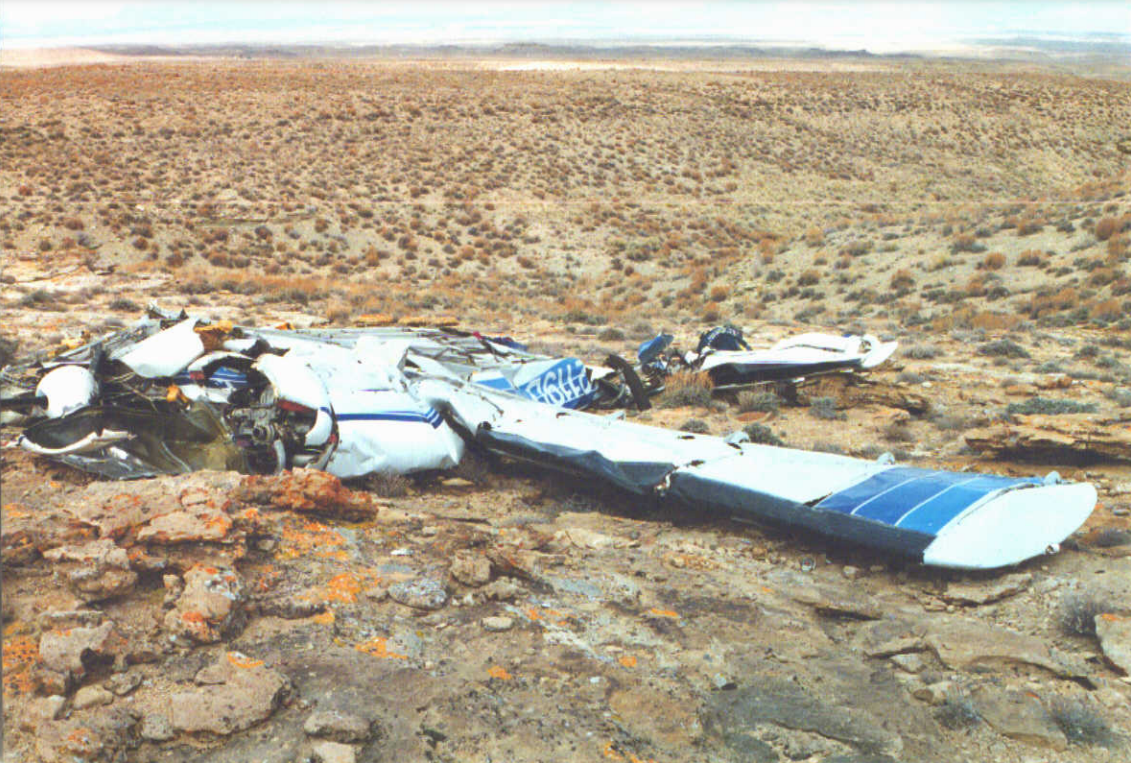
ASN Wikibase Occurrence # 35109
This information is added by users of ASN. Neither ASN nor the Flight Safety Foundation are responsible for the completeness or correctness of this information.
If you feel this information is incomplete or incorrect, you can submit corrected information.
| Date: | Thursday 6 November 1997 |
| Time: | 19:04 |
| Type: |  Piper PA-34-200T Seneca II |
| Owner/operator: | American Aviation Inc |
| Registration: | N2119D |
| MSN: | 34-7970026 |
| Year of manufacture: | 1978 |
| Total airframe hrs: | 11472 hours |
| Engine model: | Continental TSIO-360-EB |
| Fatalities: | Fatalities: 1 / Occupants: 1 |
| Aircraft damage: | Destroyed |
| Category: | Accident |
| Location: | Myton, UT -
 United States of America United States of America
|
| Phase: | En route |
| Nature: | Cargo |
| Departure airport: | Grand Junction Regional Airport, CO (GJT) |
| Salt Lake City Airport, UT (SLC) | |
| Investigating agency: | NTSB |
| Confidence Rating: |
On November 6, 1997, at 1904 mountain standard time, a Piper PA-34-200T, N2119D, was destroyed when it broke up in flight and impacted terrain 15 miles south of Myton, Utah. The commercial certificated pilot, the sole occupant aboard, was fatally injured. Dark night visual meteorological conditions prevailed, and a VFR flight plan had been filed but had not been activated. The airplane, owned and operated by American Aviation, Inc., of Salt Lake City, Utah, was being operated as a non-scheduled domestic cargo flight under Title 14 CFR Part 135. The flight departed Grand Junction, Colorado, at 1829.
The pilot was on a return flight via the same route when the accident occurred. Recorded radar data revealed two transponder-equipped airplanes. The first target, the accident airplane, was tracked between 1902:51 and 1904:07, flying in a southeast-to-northwest direction at an encoded altitude of 12,600 feet mean sea level (msl). The second airplane, an unidentified aircraft squawking a transponder code of 1200, was tracked between 1907:00 and 1912:07, flying in a northwest-to-southeast direction at an encoded altitude of 13,600 feet msl. The unidentified airplane was estimated to have been 14 miles from the accident airplane at the time of the accident. At 1904, the accident airplane disappeared from the radarscope. No distress calls were received. Between 1906 and 1926, the controller tried to reestablish radio contact with the pilot, but to no avail. Search and rescue operations were initiated, and the wreckage was located the following afternoon. According to the metallurgist's factual report, the left wing, right horizontal stabilator, and vertical stabilizer spar fractures were 'consistent with overstress separations' and failed under 'negative loading.' There was no evidence of 'preexisting cracking such as fatigue or stress corrosion.' Dark night visual meteorological conditions prevailed at the time of the accident.
Probable Cause: The pilot exceeded the design stress limits of the airplane which resulted in an in-flight airframe overload failure. A related factor was the dark night.
Accident investigation:
 |
|
Sources:
NTSB: https://www.ntsb.gov/ntsb/brief.asp?ev_id=20001208X09166
Images:


Photos: NTSB
Revision history:
| Date/time | Contributor | Updates |
|---|---|---|
| 24-Oct-2008 10:30 | ASN archive | Added |
| 13-Sep-2022 20:34 | Captain Adam | Updated [Aircraft type, Operator, Nature, Departure airport, Destination airport, Narrative, Accident report, Photo] |
| 13-Sep-2022 20:35 | Captain Adam | Updated [Photo] |
Corrections or additions? ... Edit this accident description
The Aviation Safety Network is an exclusive service provided by:


 ©2024 Flight Safety Foundation
©2024 Flight Safety Foundation